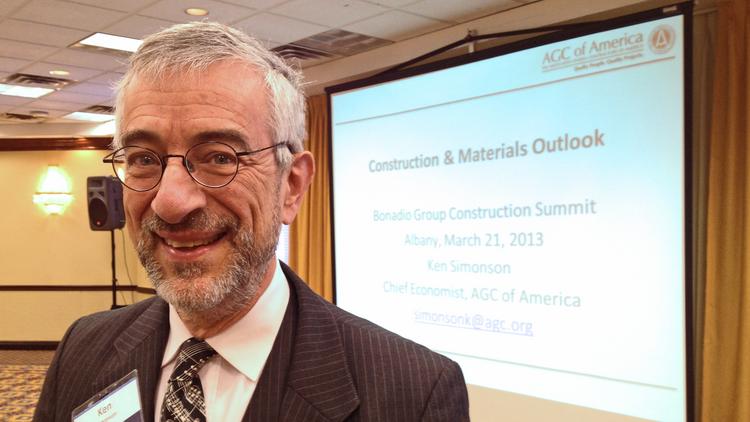
Ken Simonson, a national economist specializing in the construction industry for the Associated General Contractors of America, made it a point to give his annual update in New Mexico during the week of the Albuquerque International Balloon Fiesta.
While Simonson watched this morning's balloons lift off, he told a roomful of contractors that the construction industry may not fare so well.
Simonson was in Albuquerque on Tuesday to give his annual economic outlook to the Associated General Contractors of New Mexico at the Crowne Plaza Albuquerque in conjunction with the local chapters of the American Subcontractors Association and Construction Financial Management Association.
In fact, Simonson said, there may be even more crosswinds and cloud cover ahead in 2017.
Almost every type of construction, from building schools and hospitals to highways and roads, is forecasted to grow slower in 2017.
In New Mexico, construction contributed $3 billion to the state's GDP, a 3.7 percent increase compared to 2014. Construction wages and salaries in 2015 totaled $2 billion in New Mexico, and the average construction worker's pay was $43,500.
Nationally between 2014 to 2015, construction saw a 7 percent growth. This year, the forecast is between 4 and 10 percent growth. But Simonson said 2017 will fare worse, with growth expected to fall between 2 and 6 percent.
"It's flattening out," Simonson said, referring to both construction spending and employment.
Construction of new hotels was up 30 percent in 2015 and is expected to be up 26 percent this year. Next year, Simonson predicts growth will be flat.
While highway and transportation construction did well last year, it's been flat the first eight months of this year. While construction of retail centers will grow 7 to 12 percent this year, next year it'll fall between zero and 5 percent due to more retailers consolidating their operations.
And with state budgets tight across the U.S., public construction and the education sector from pre-K through university is expected to take a hit.











Comments